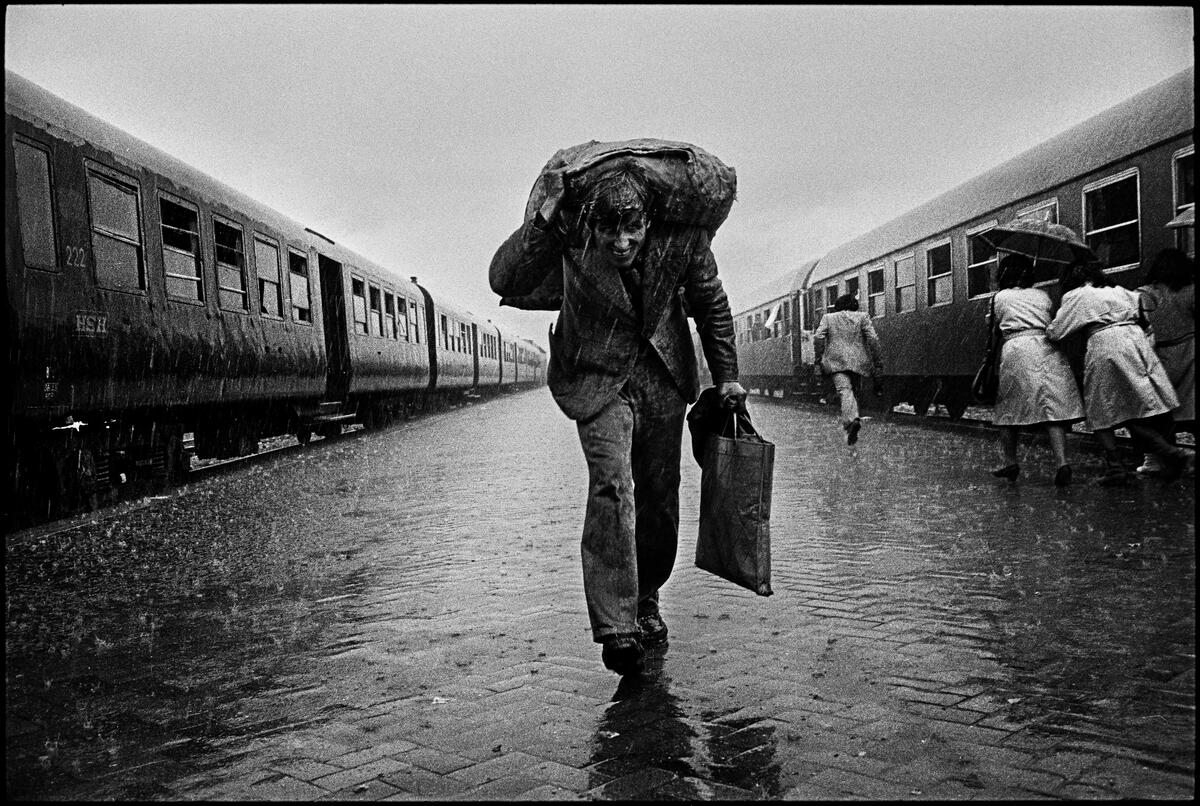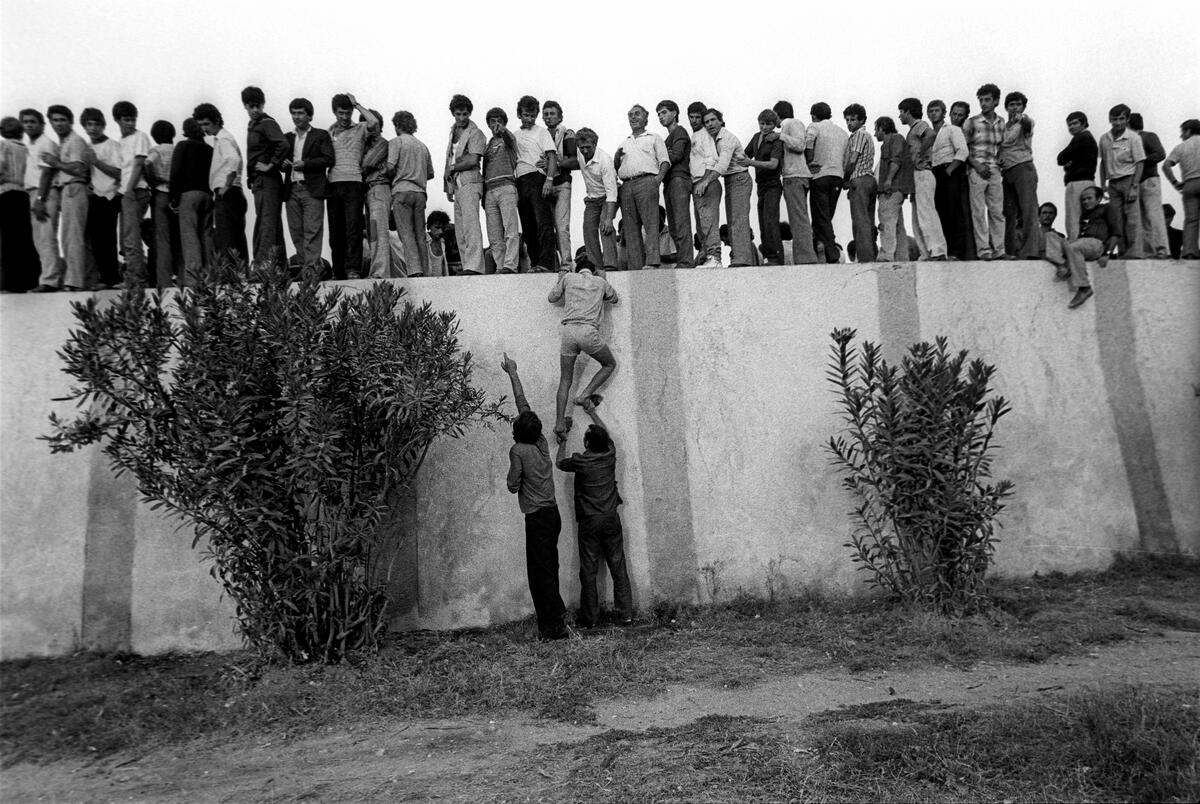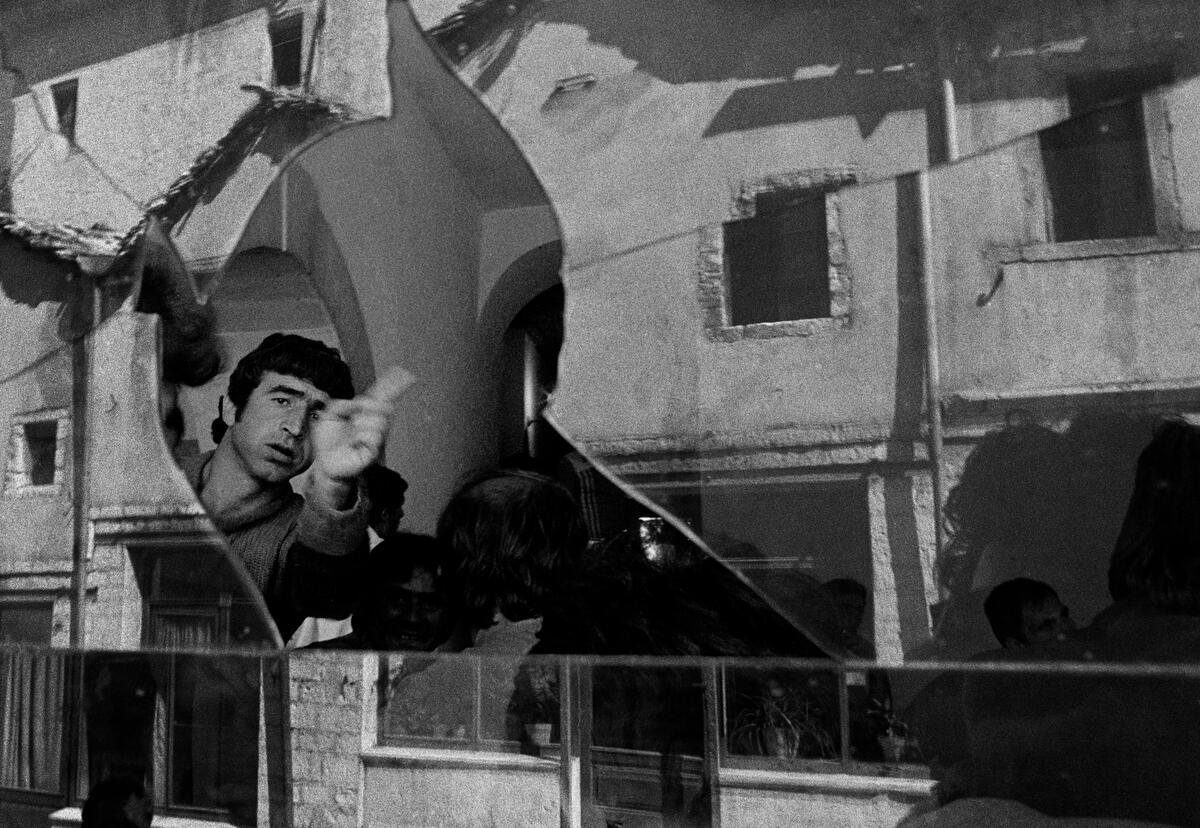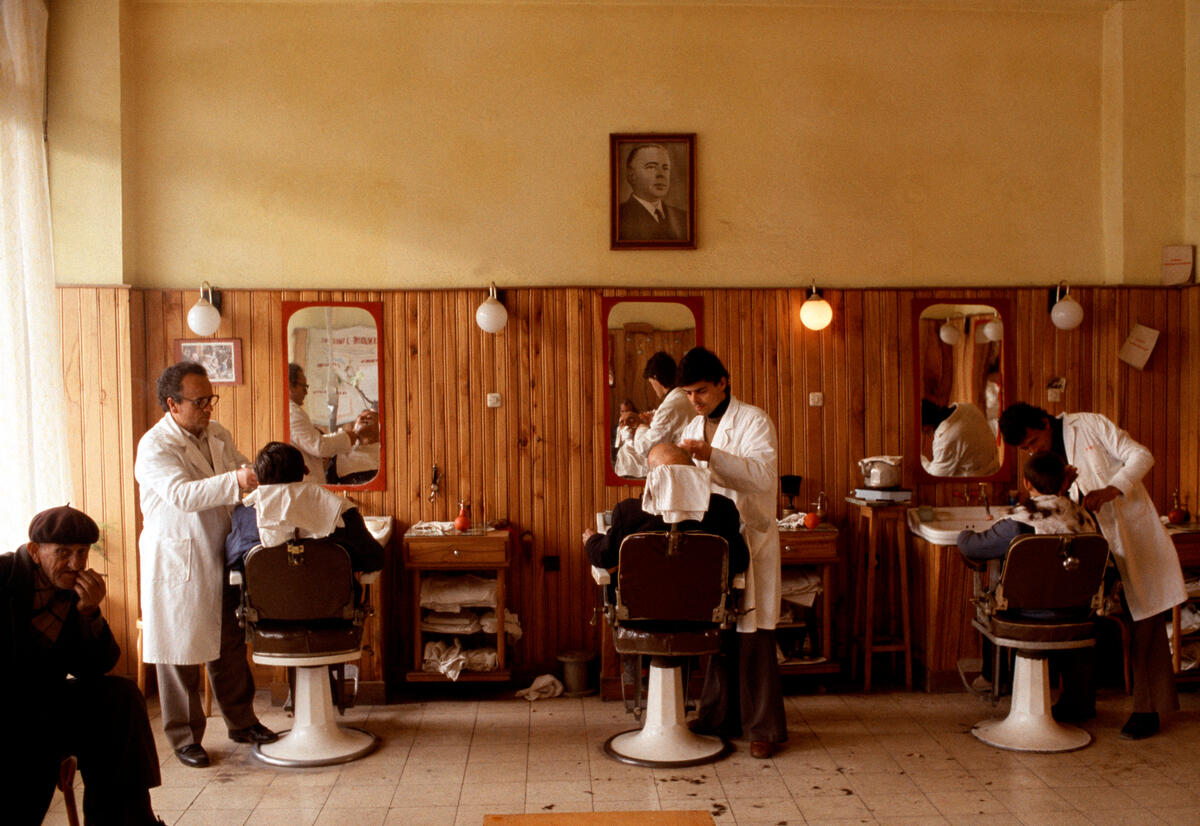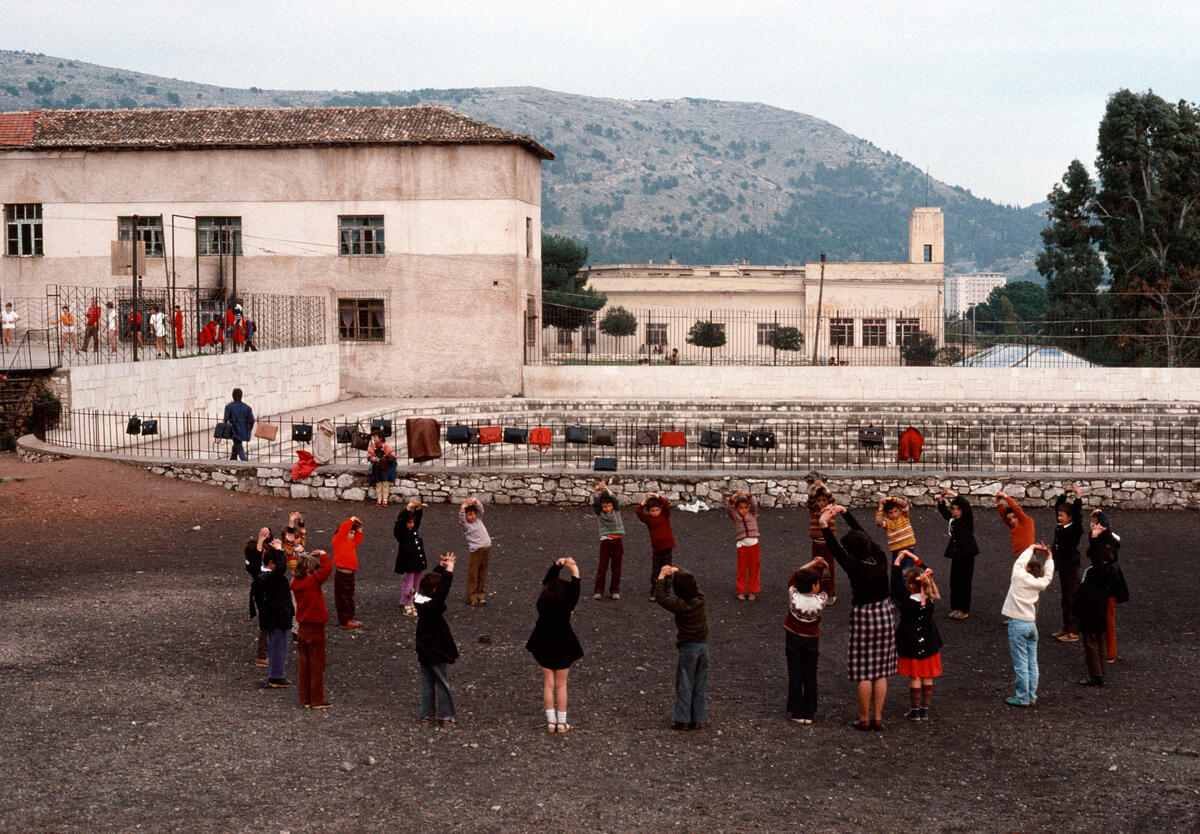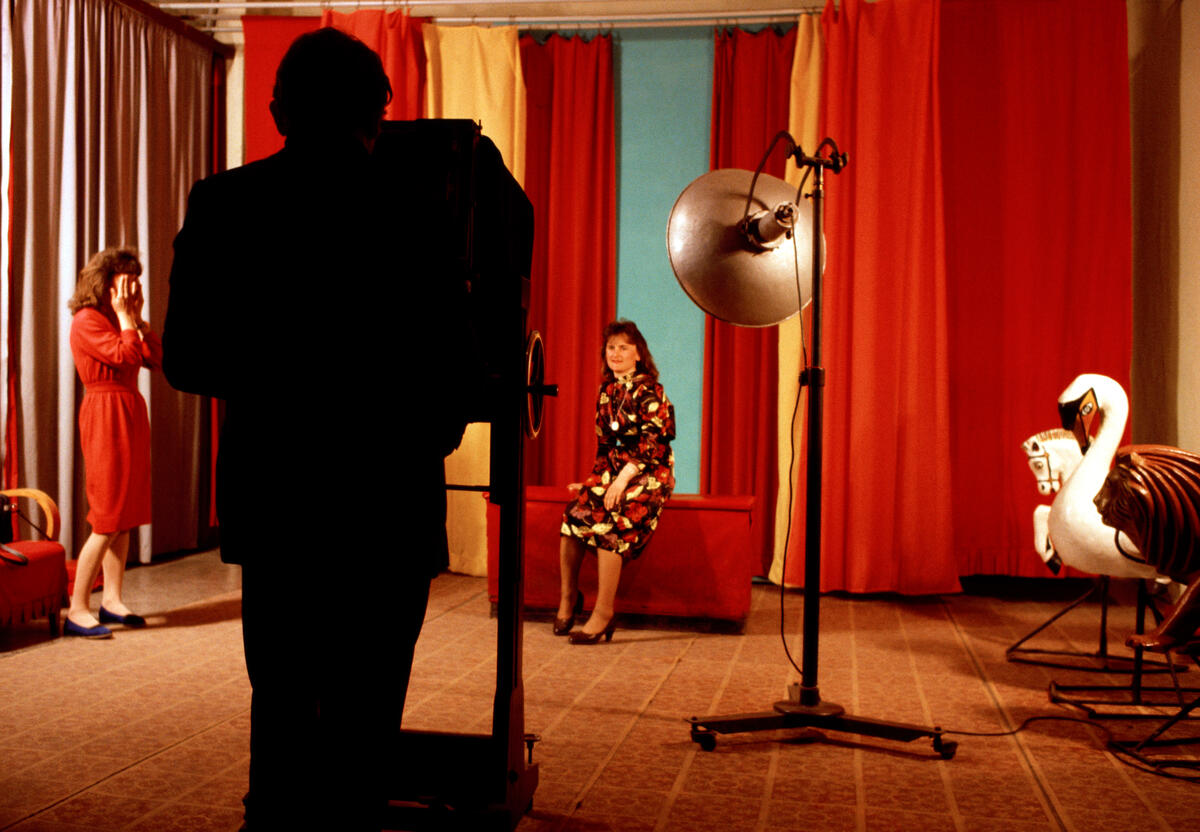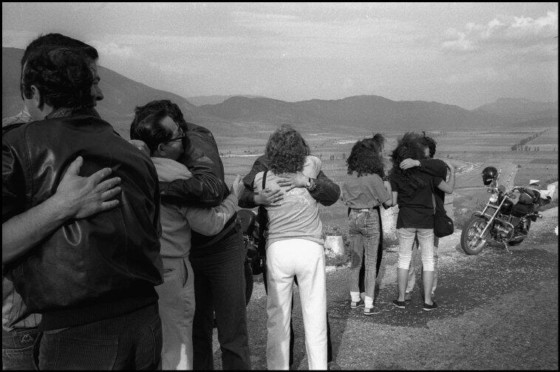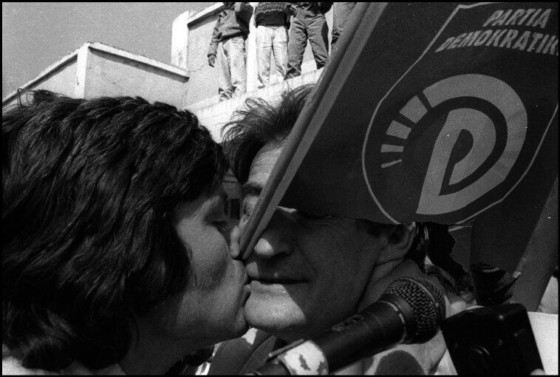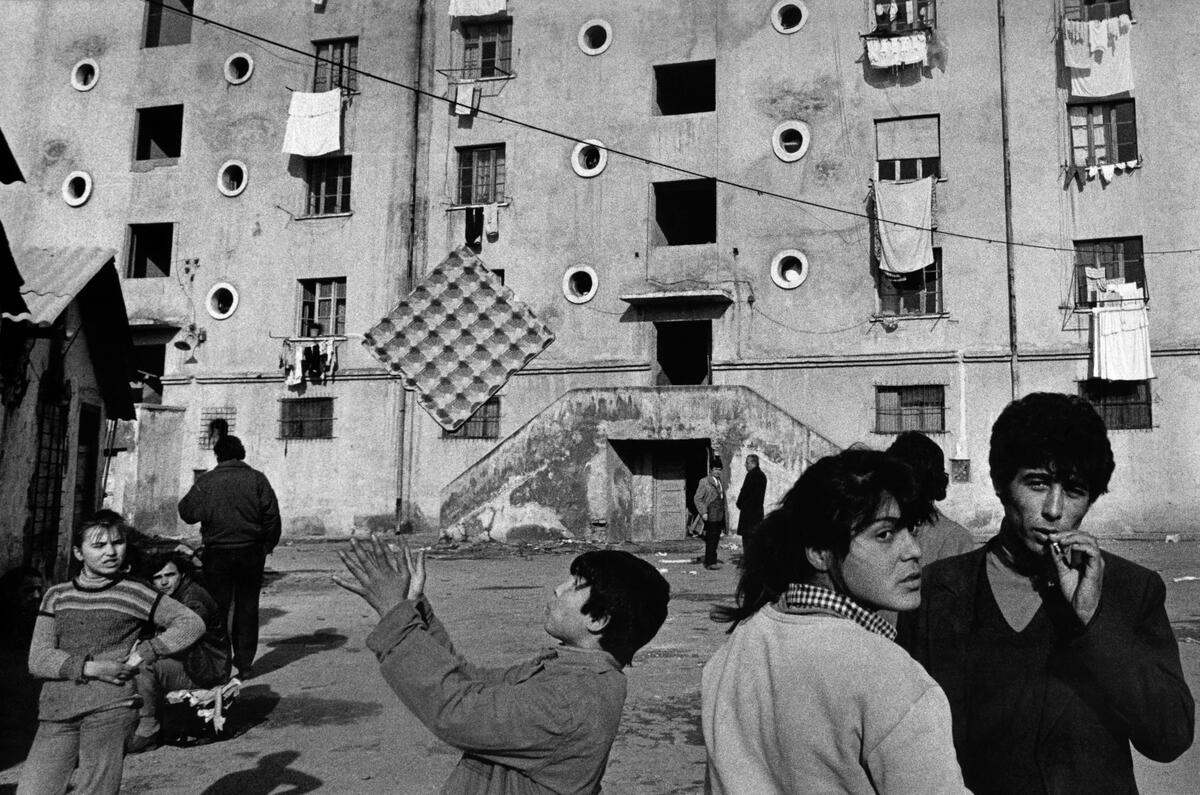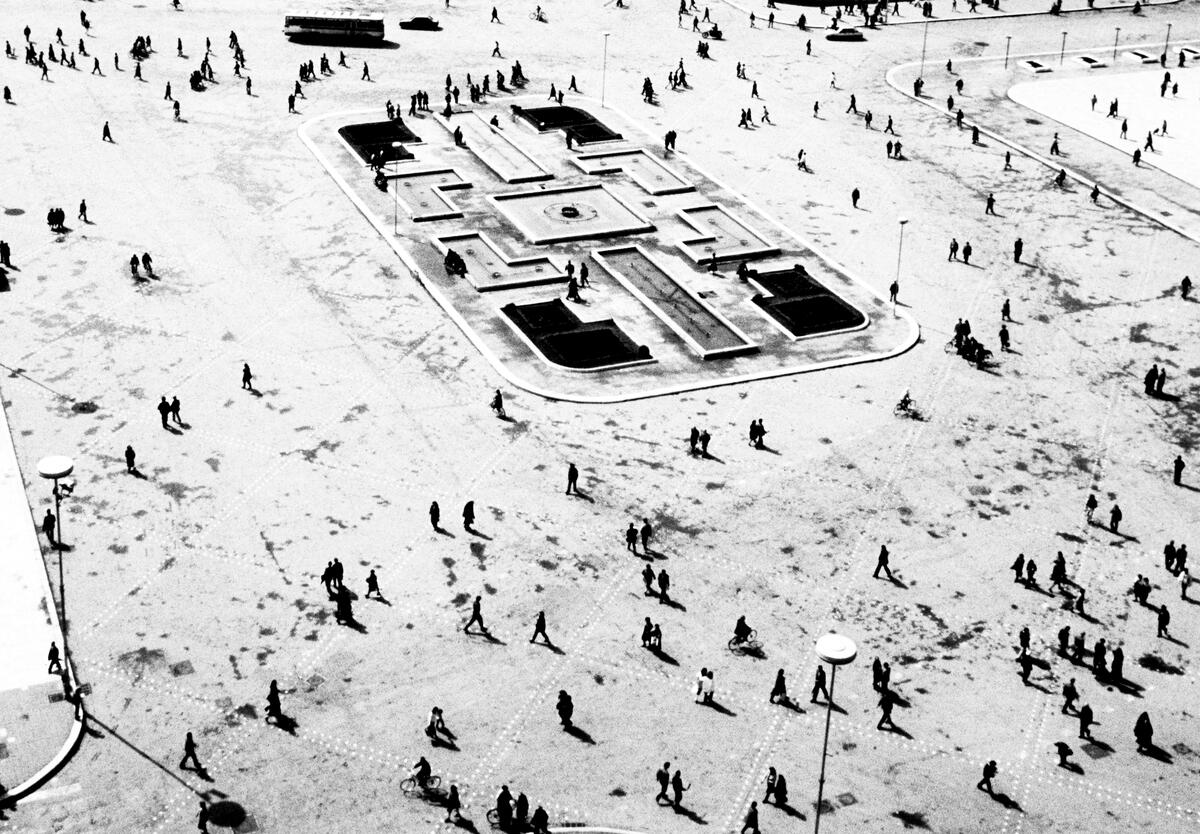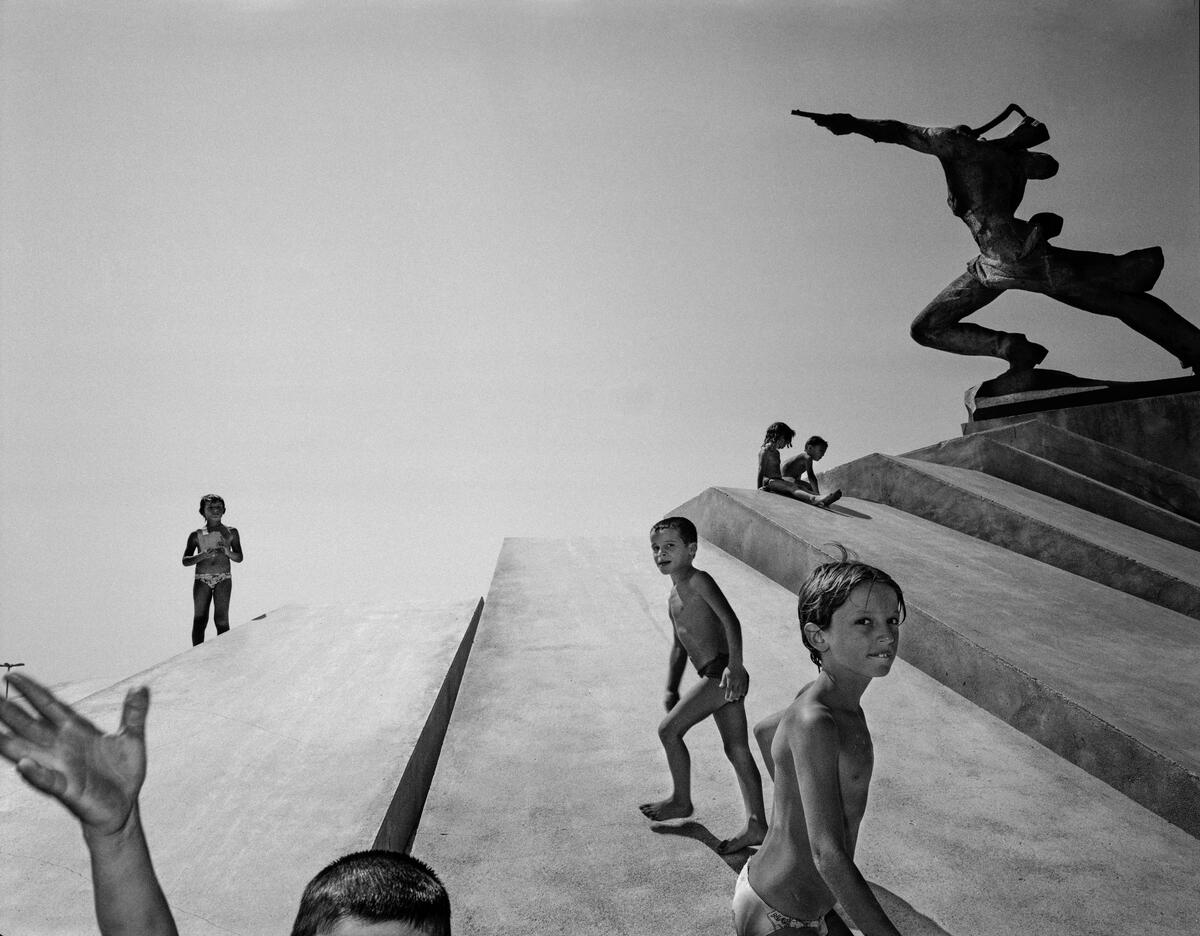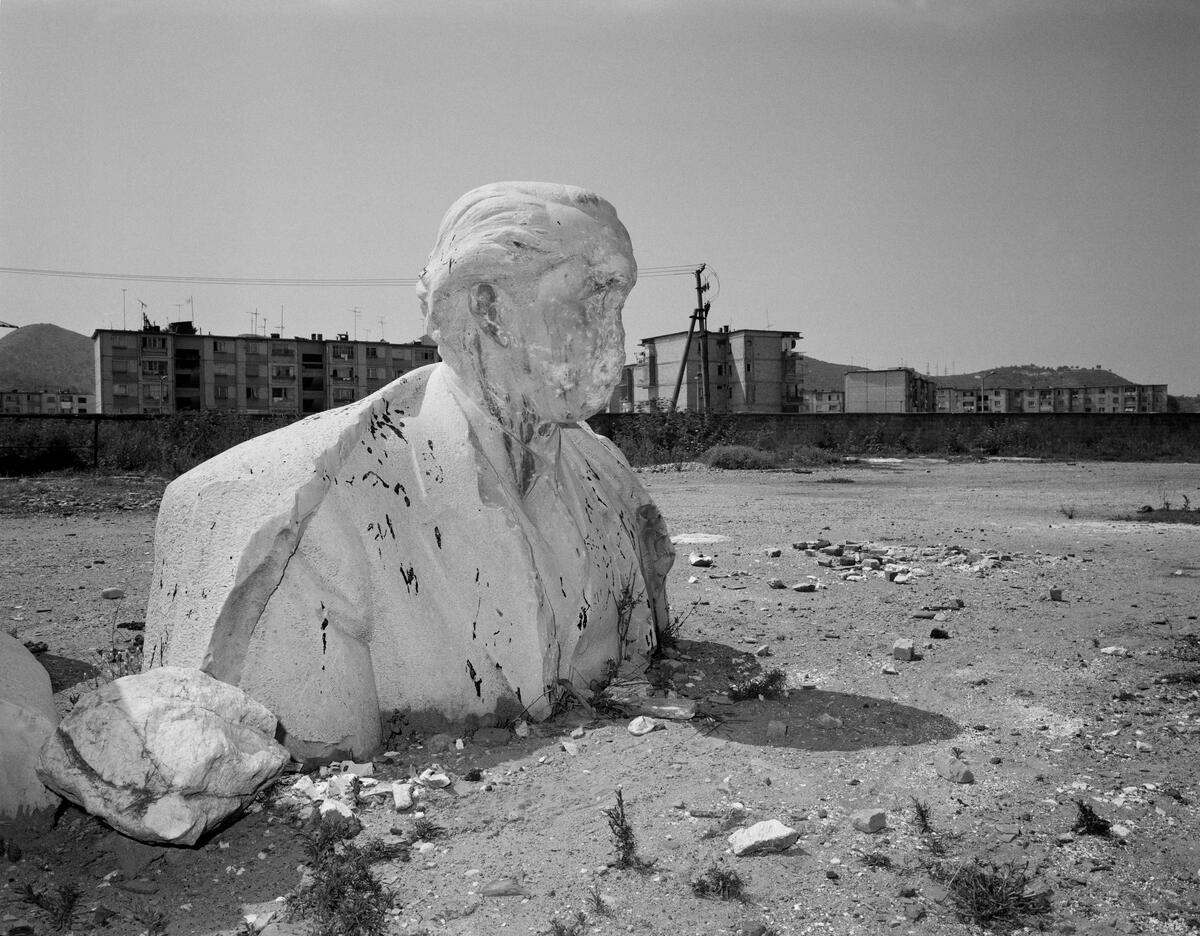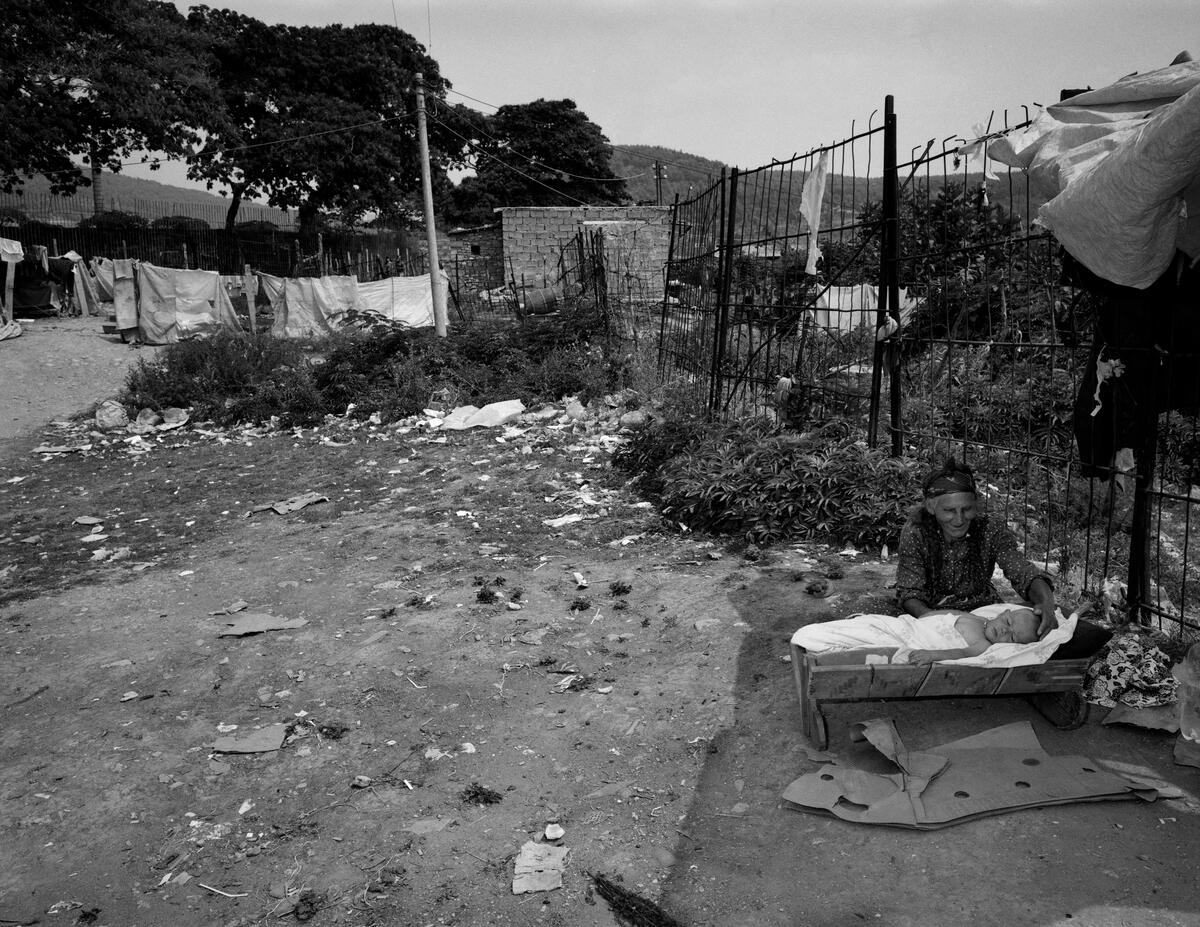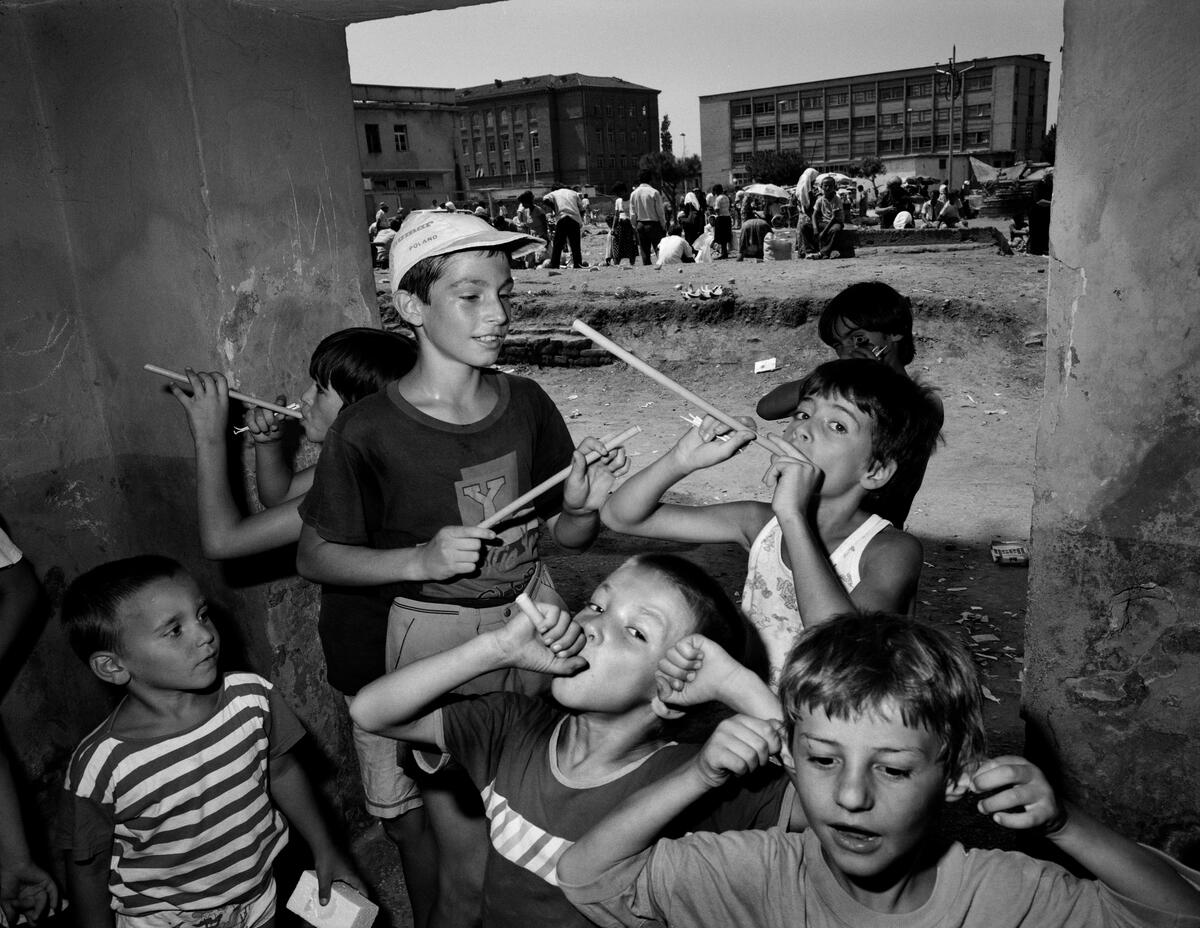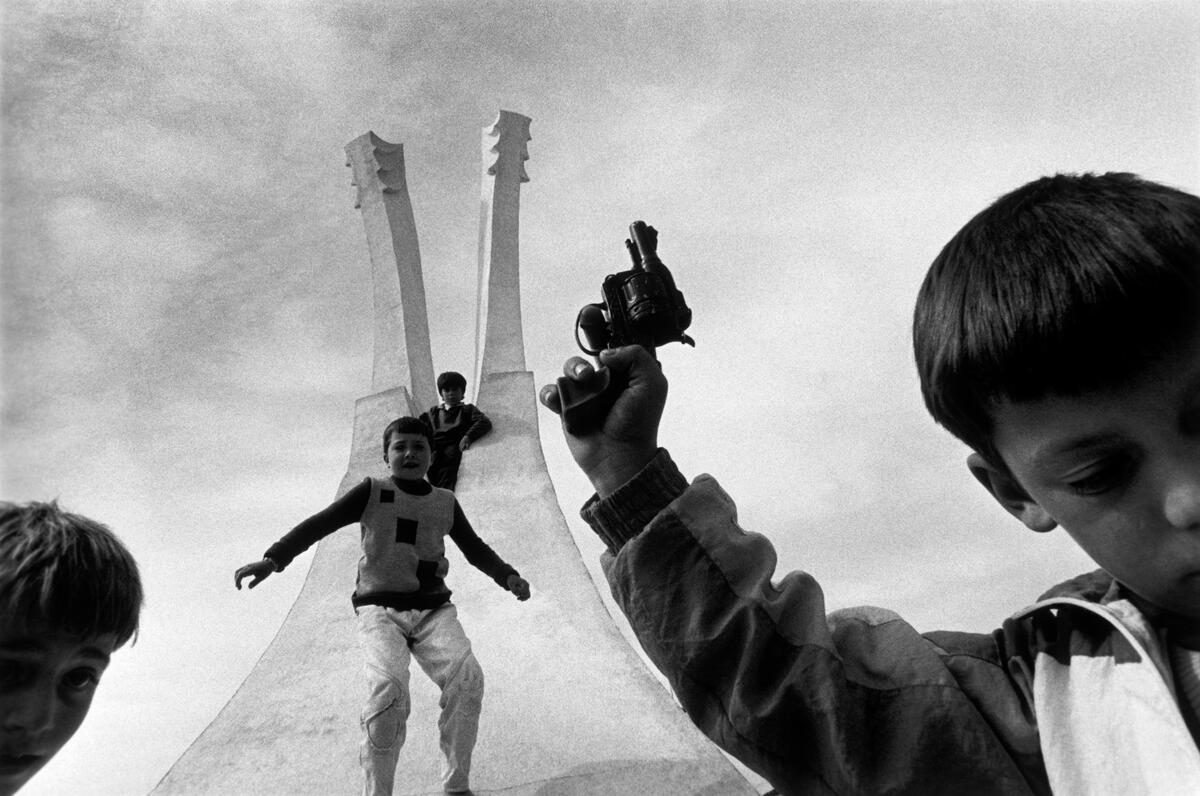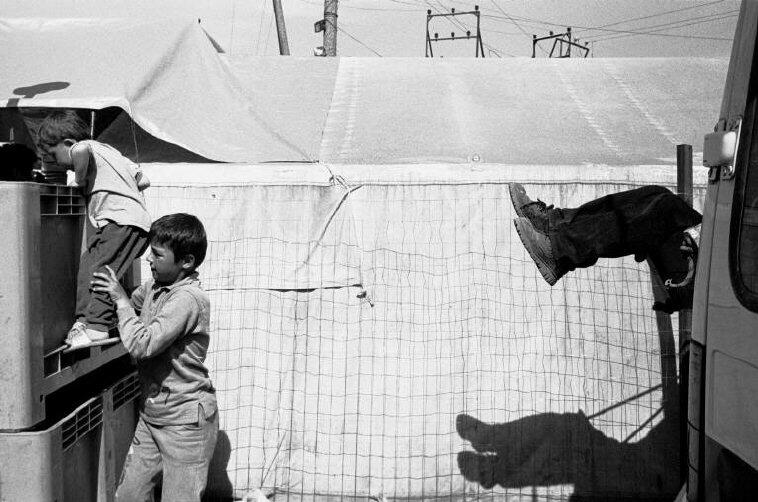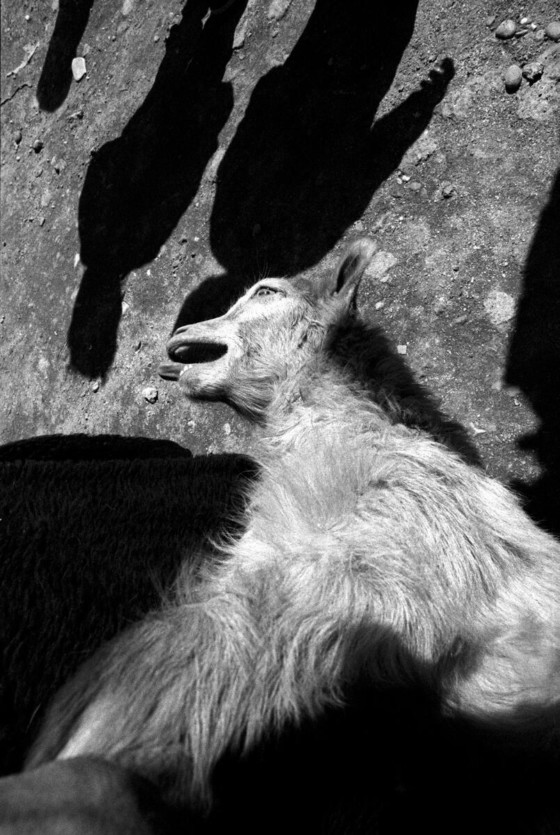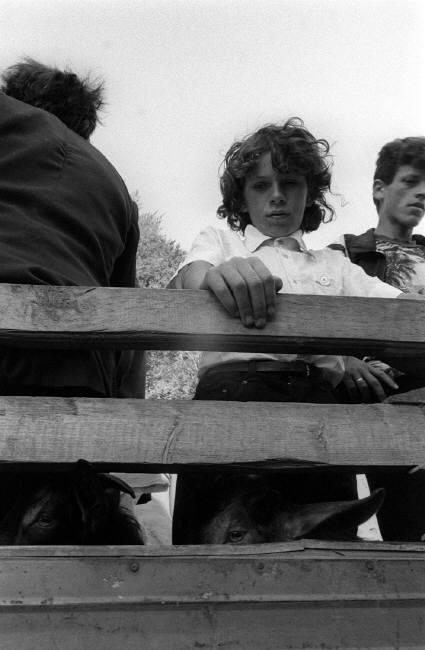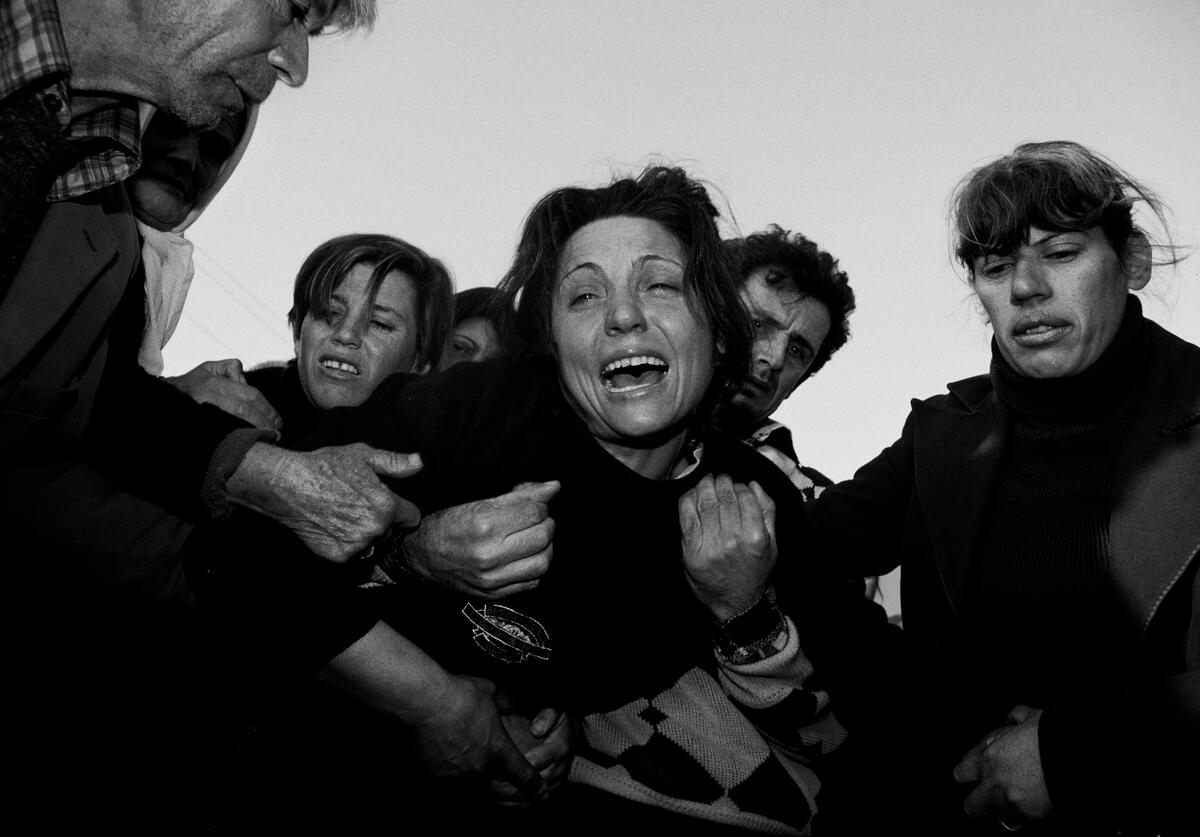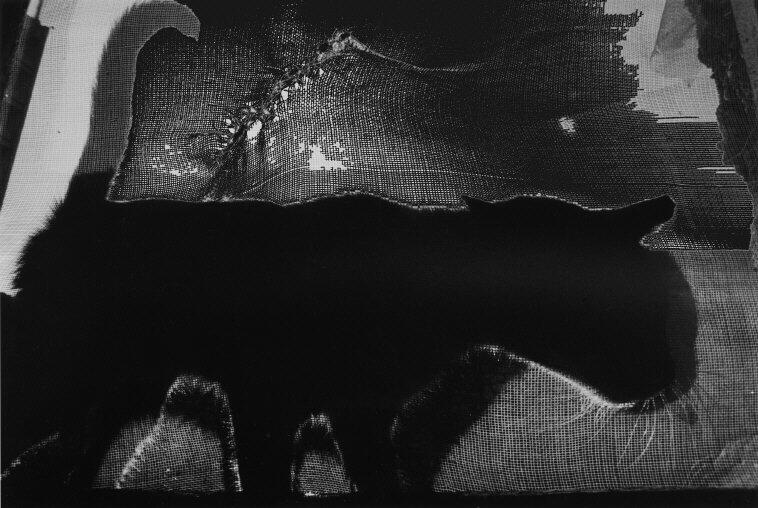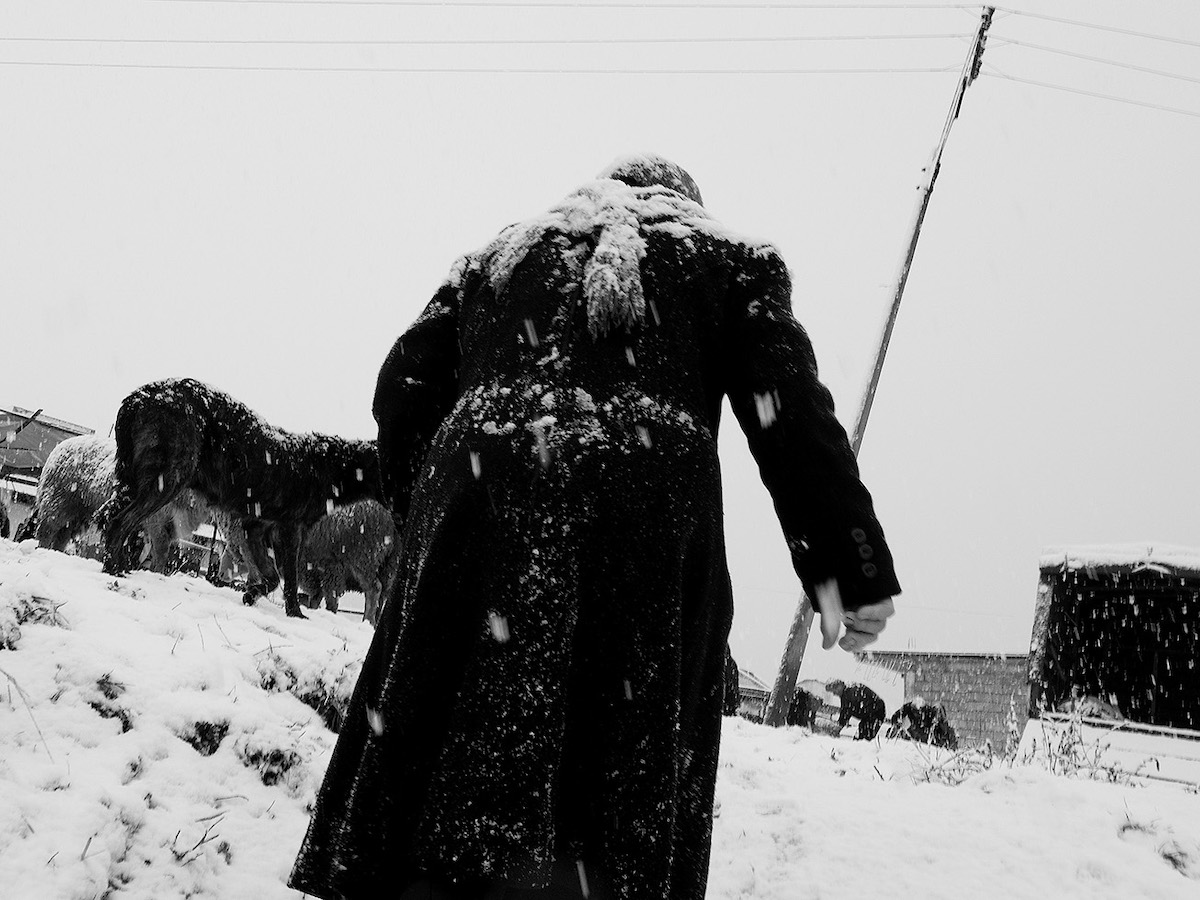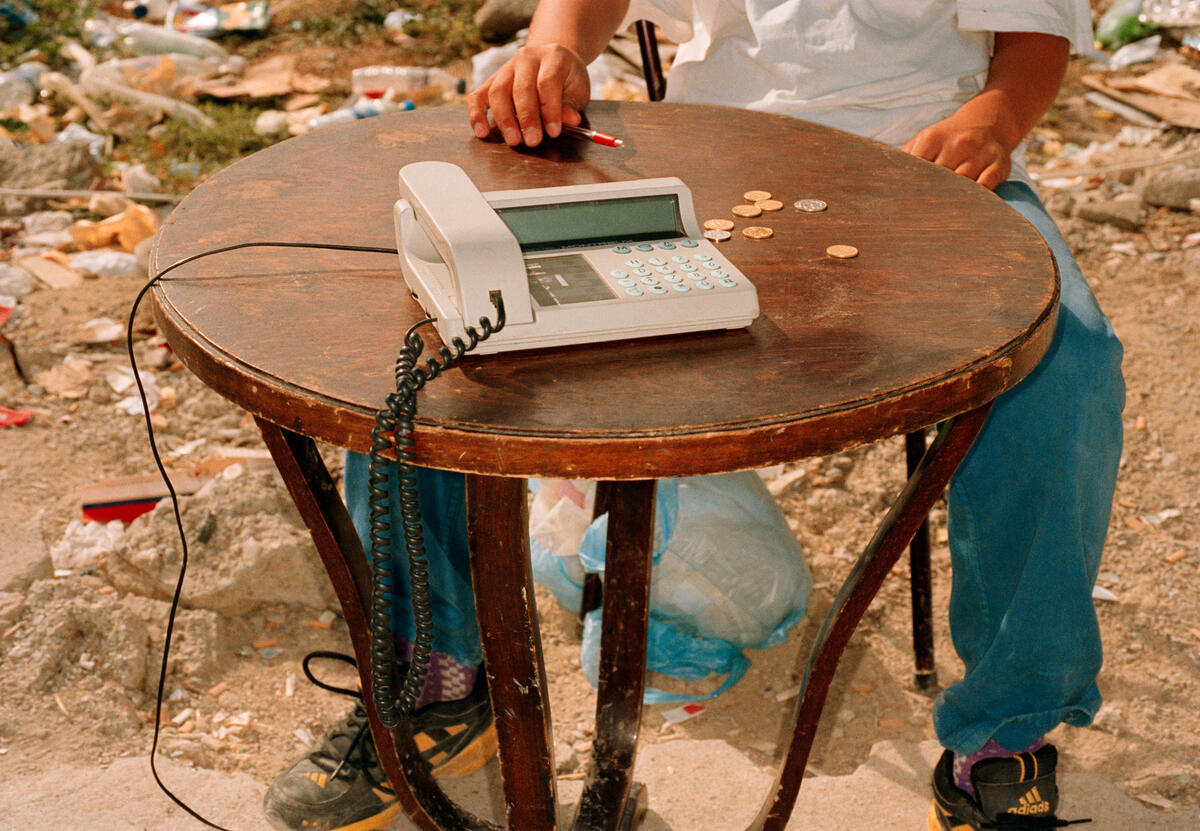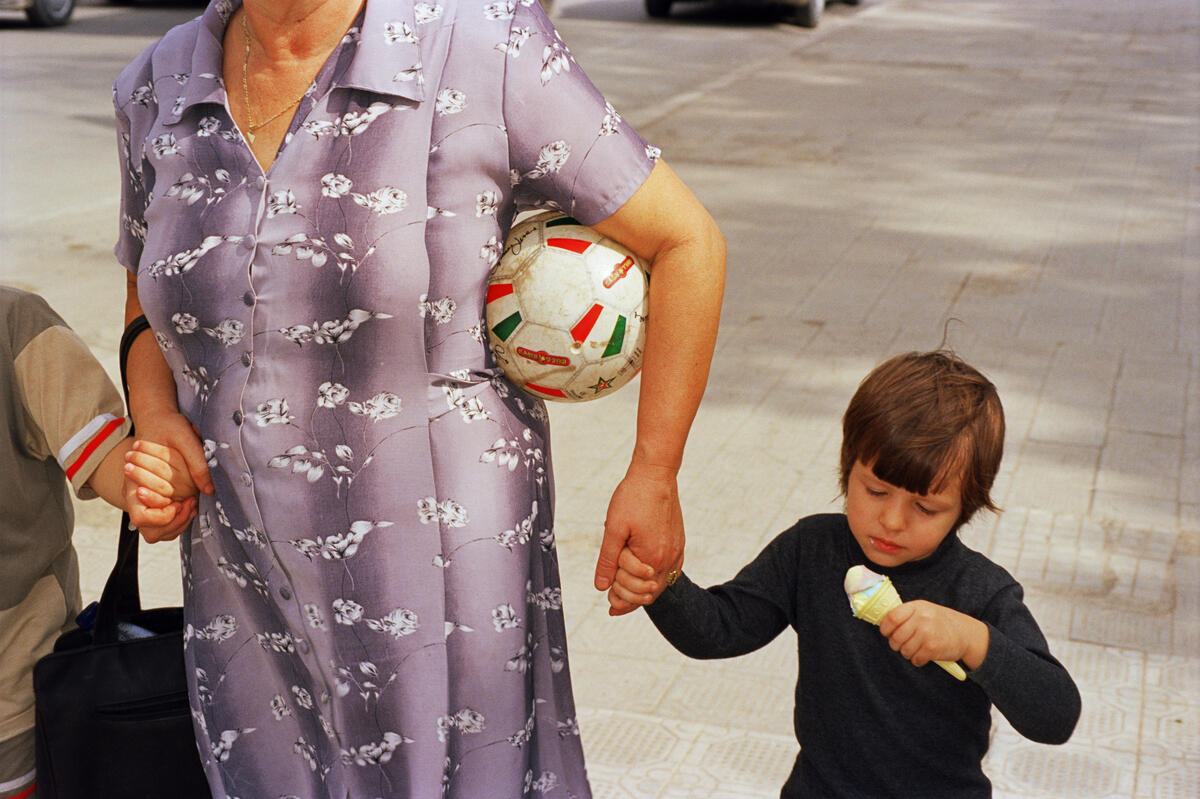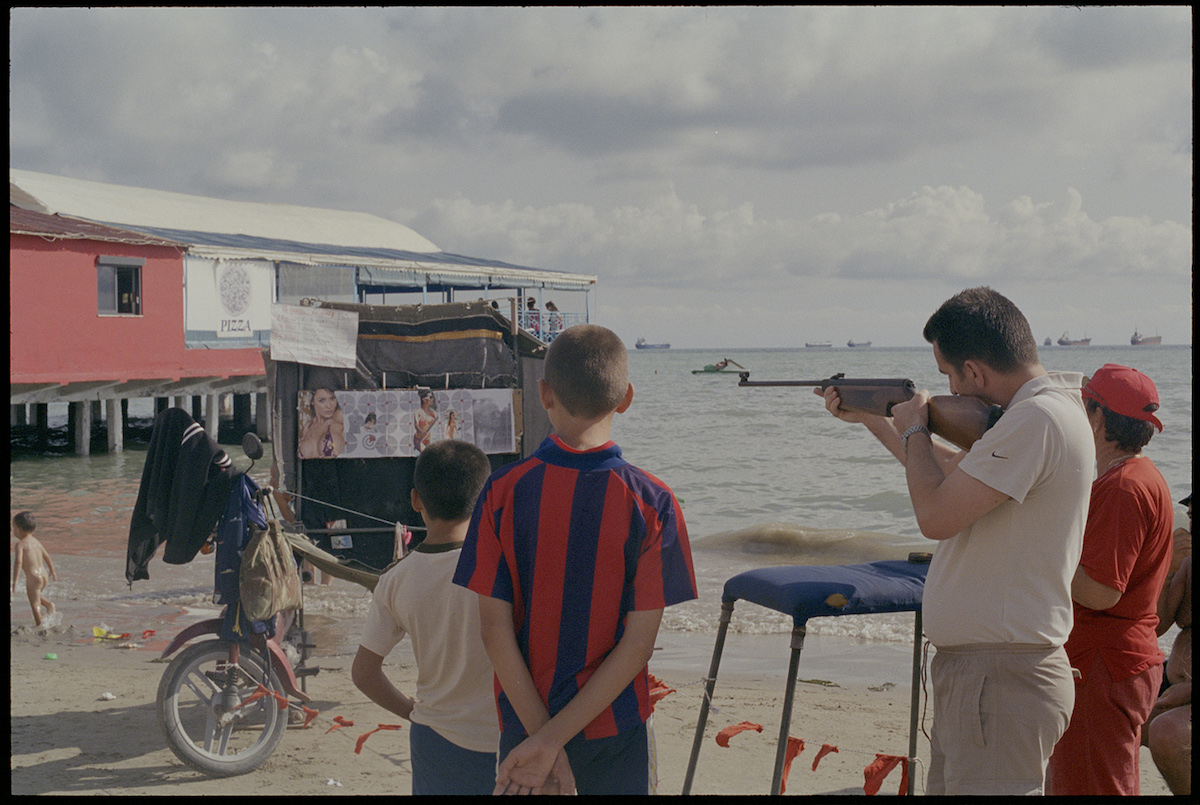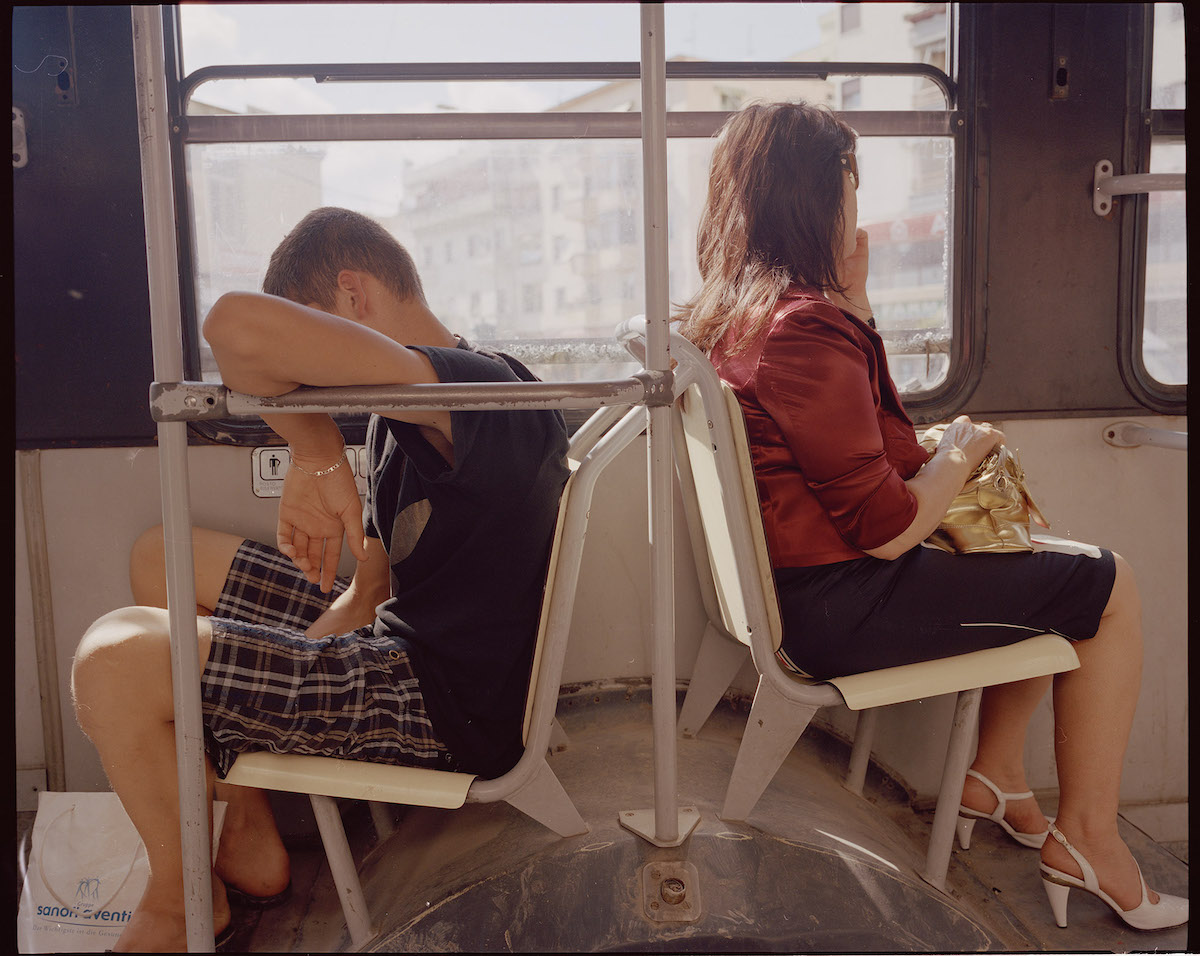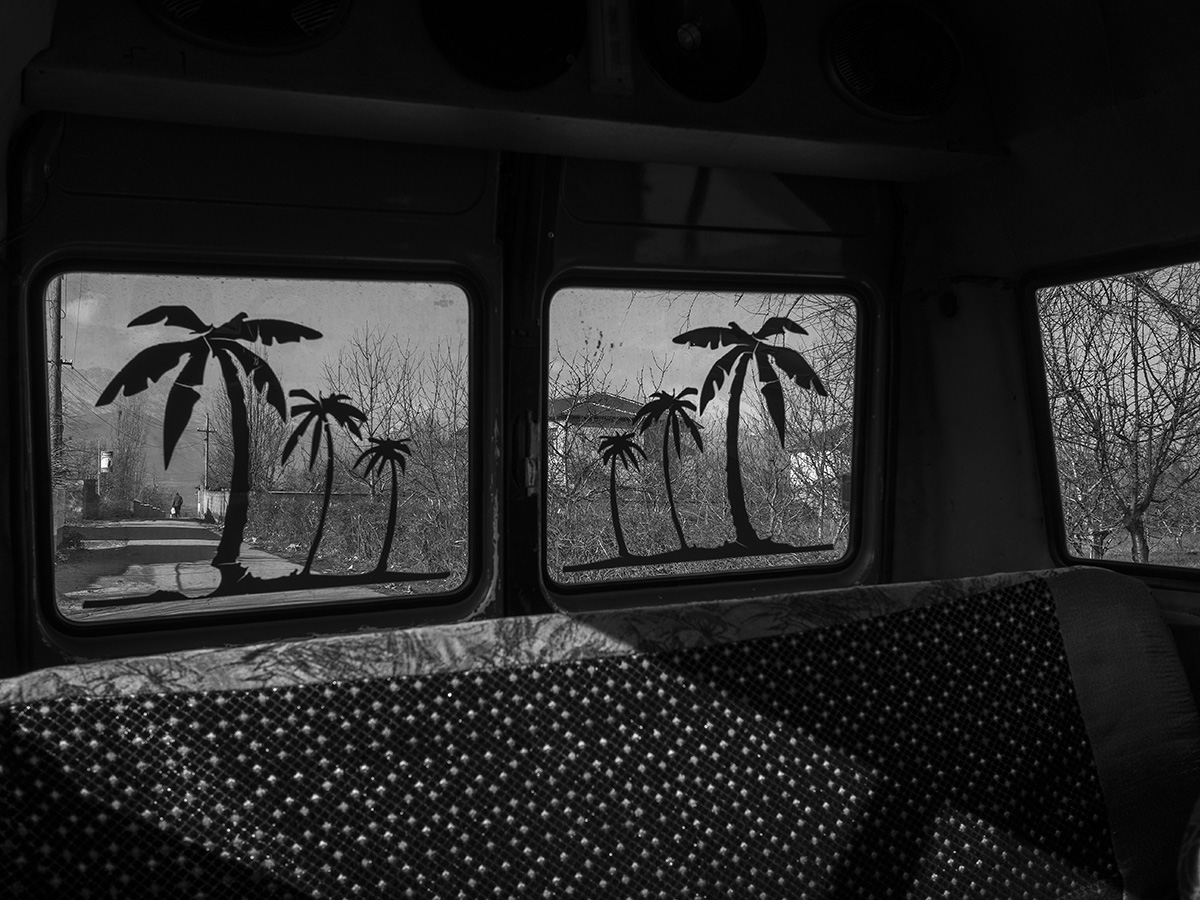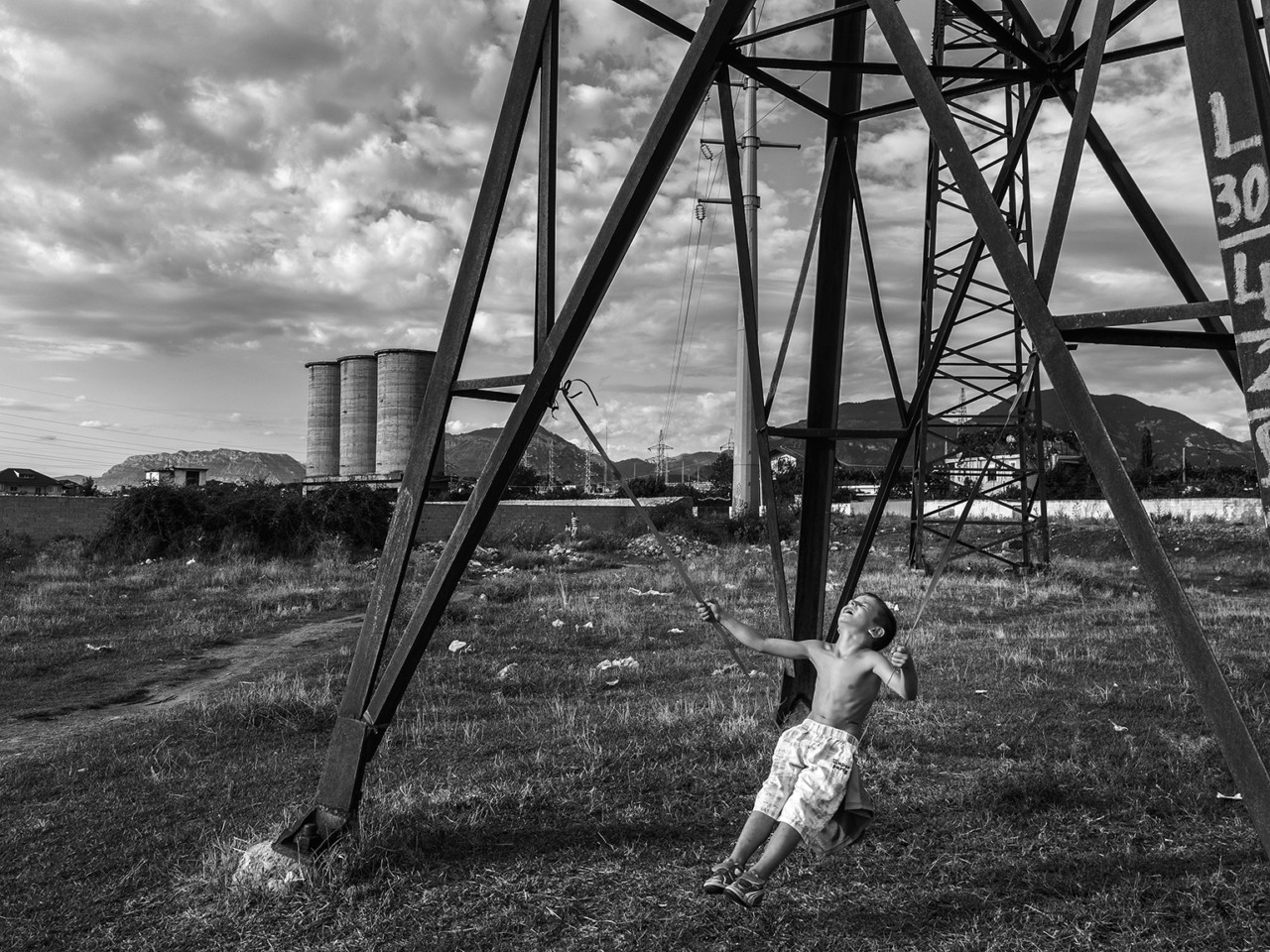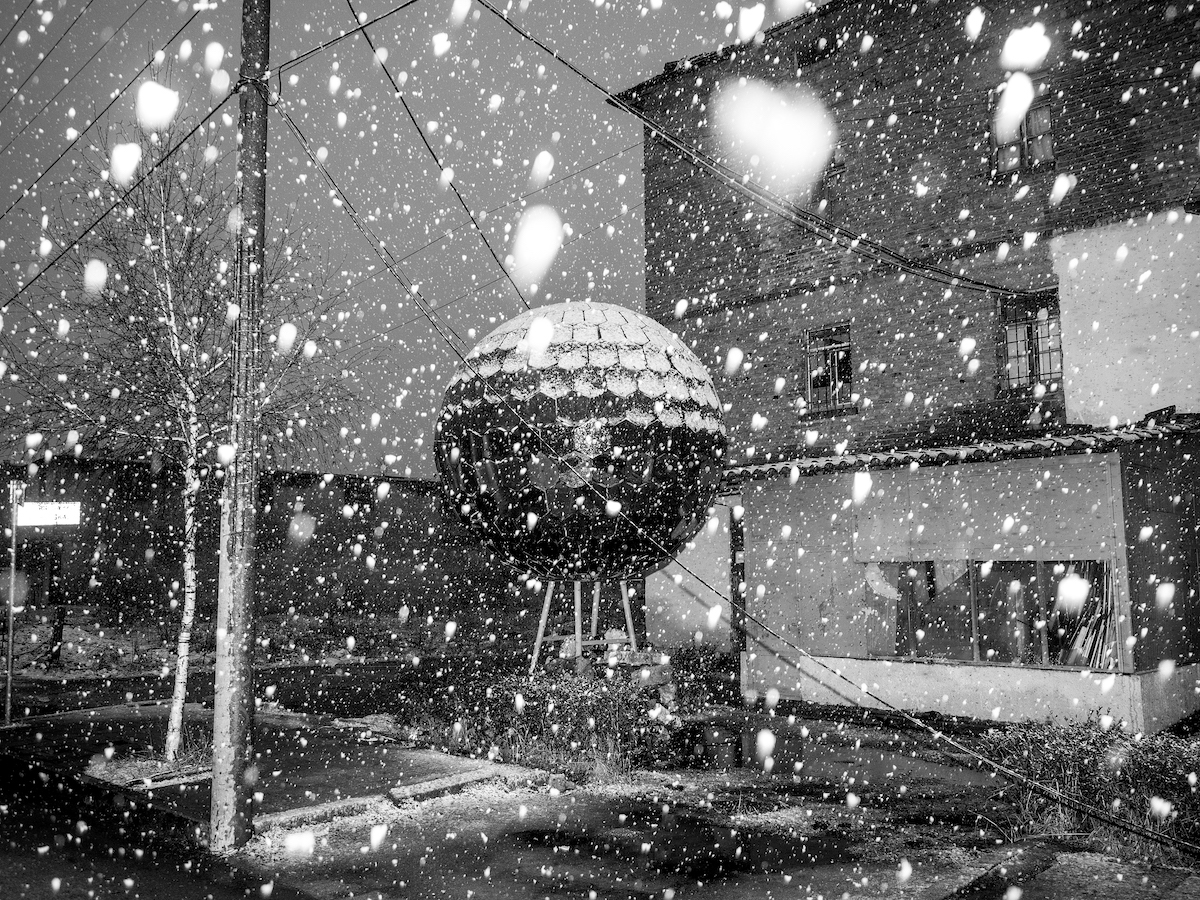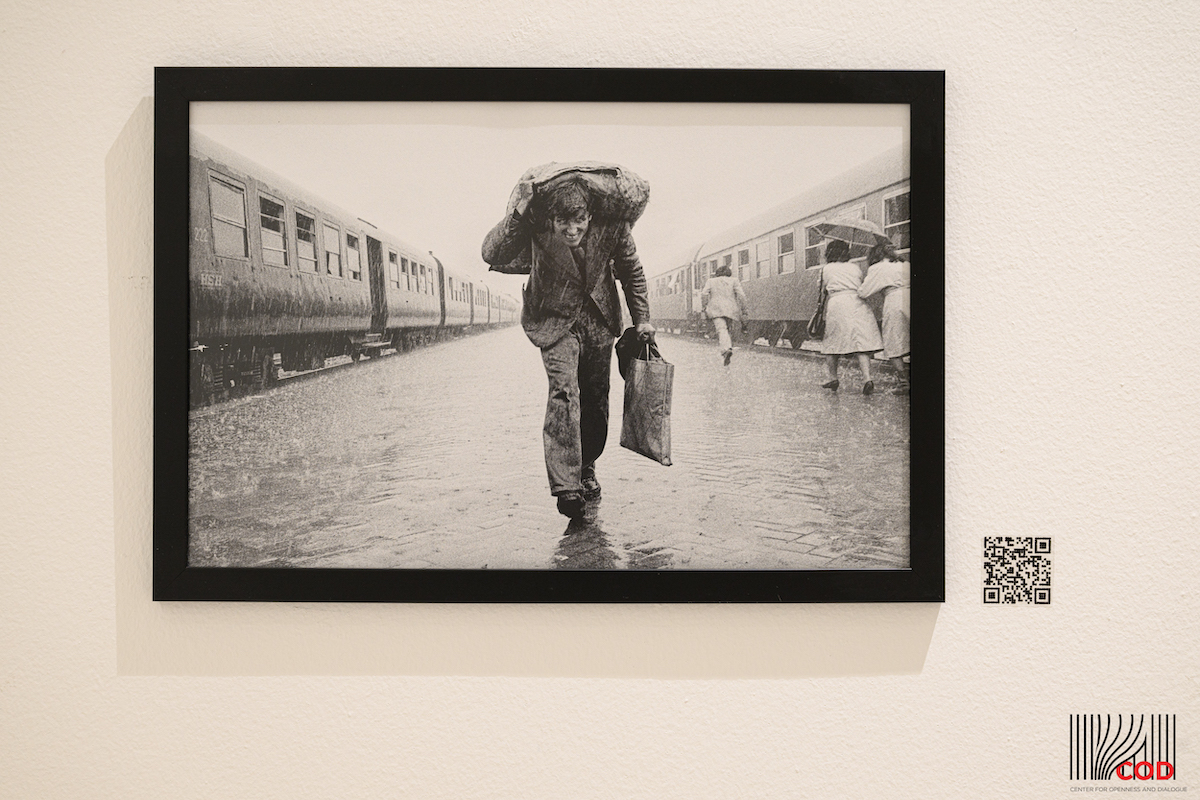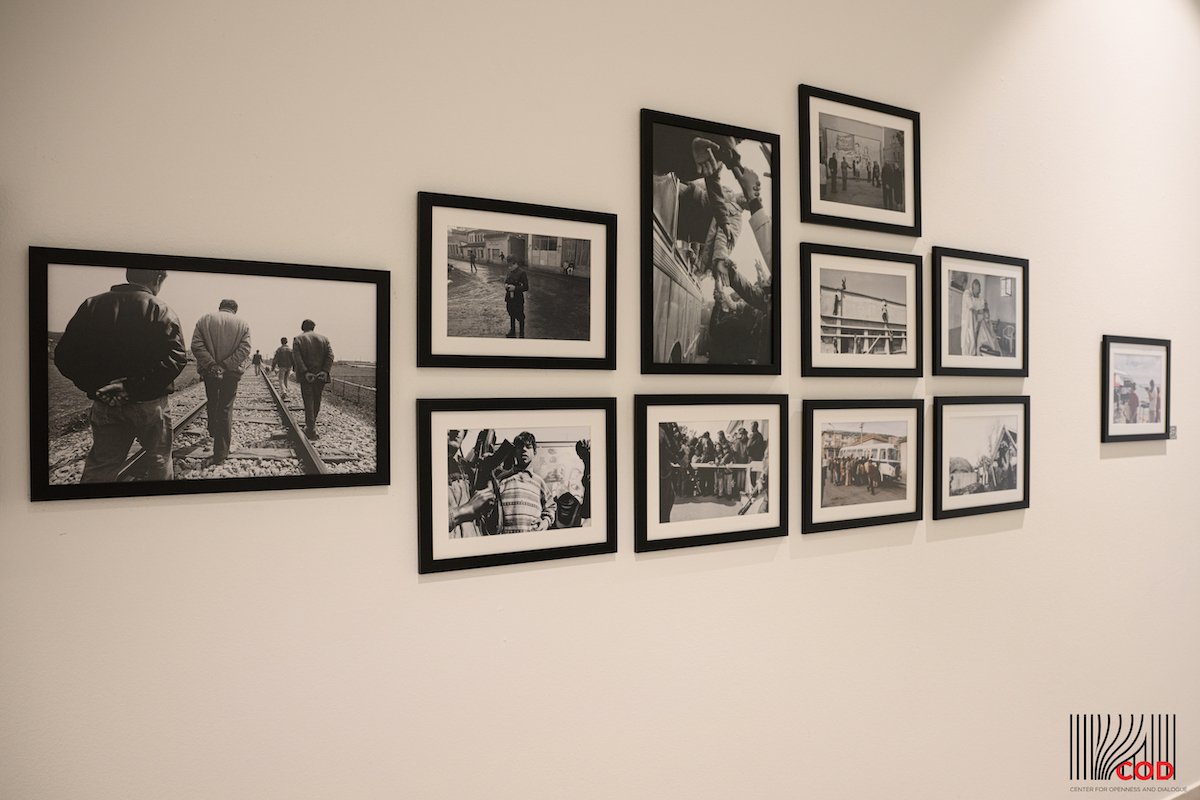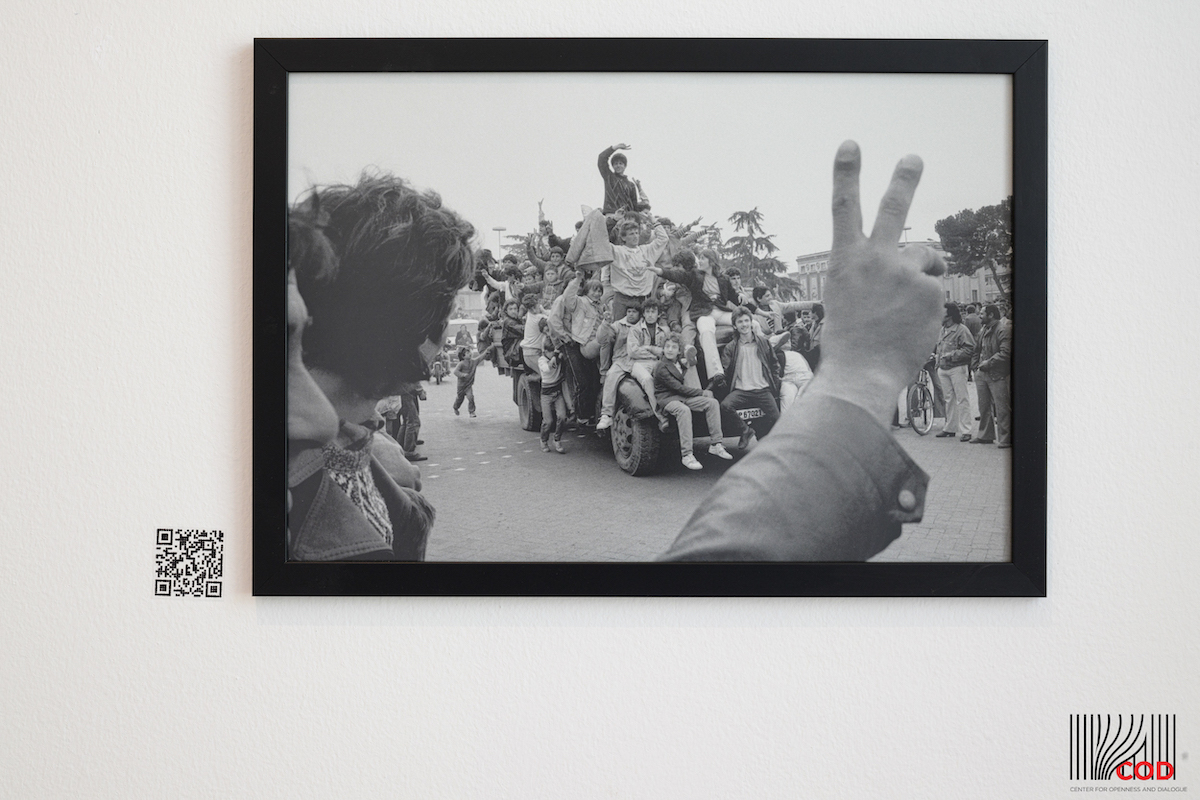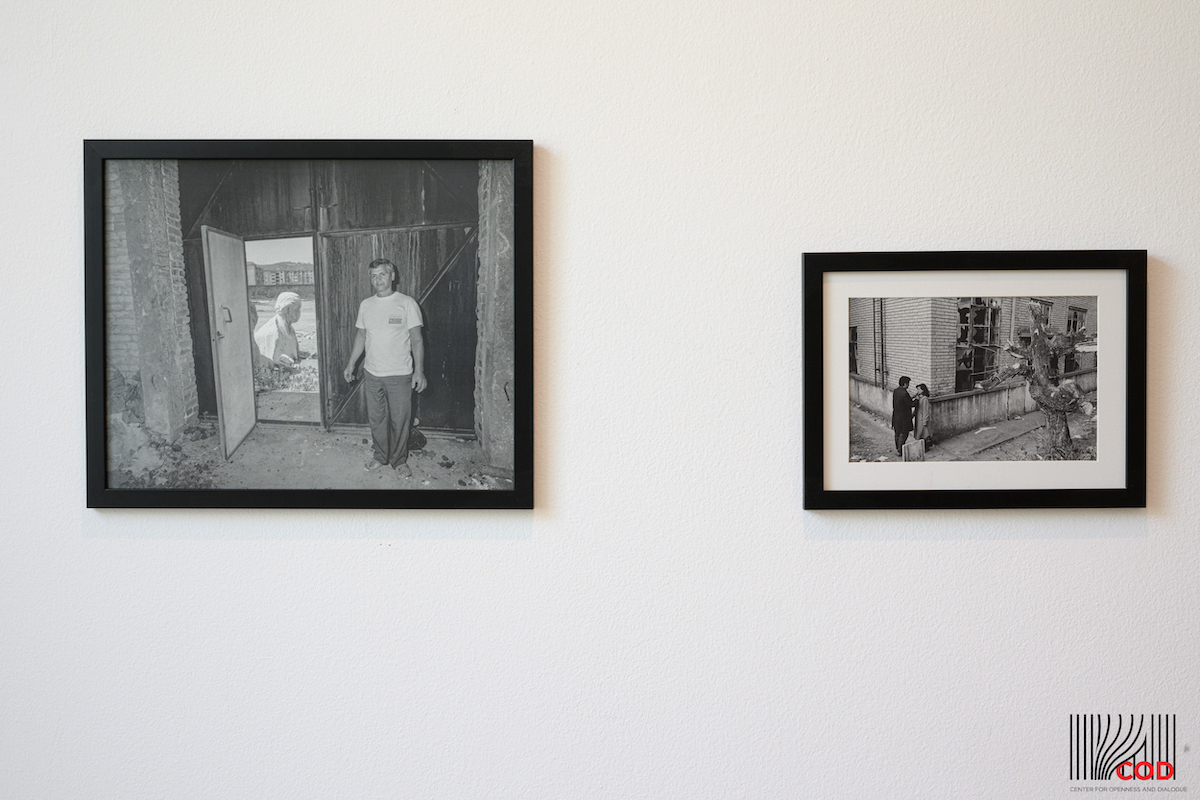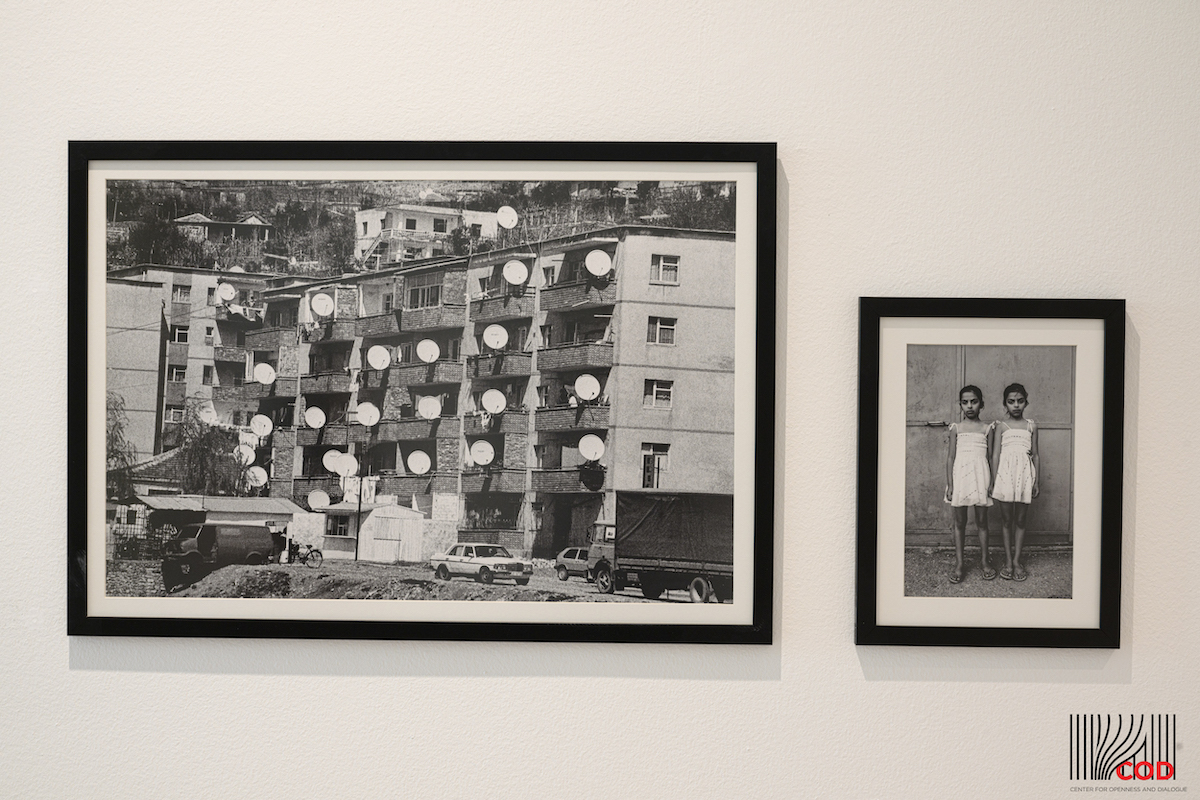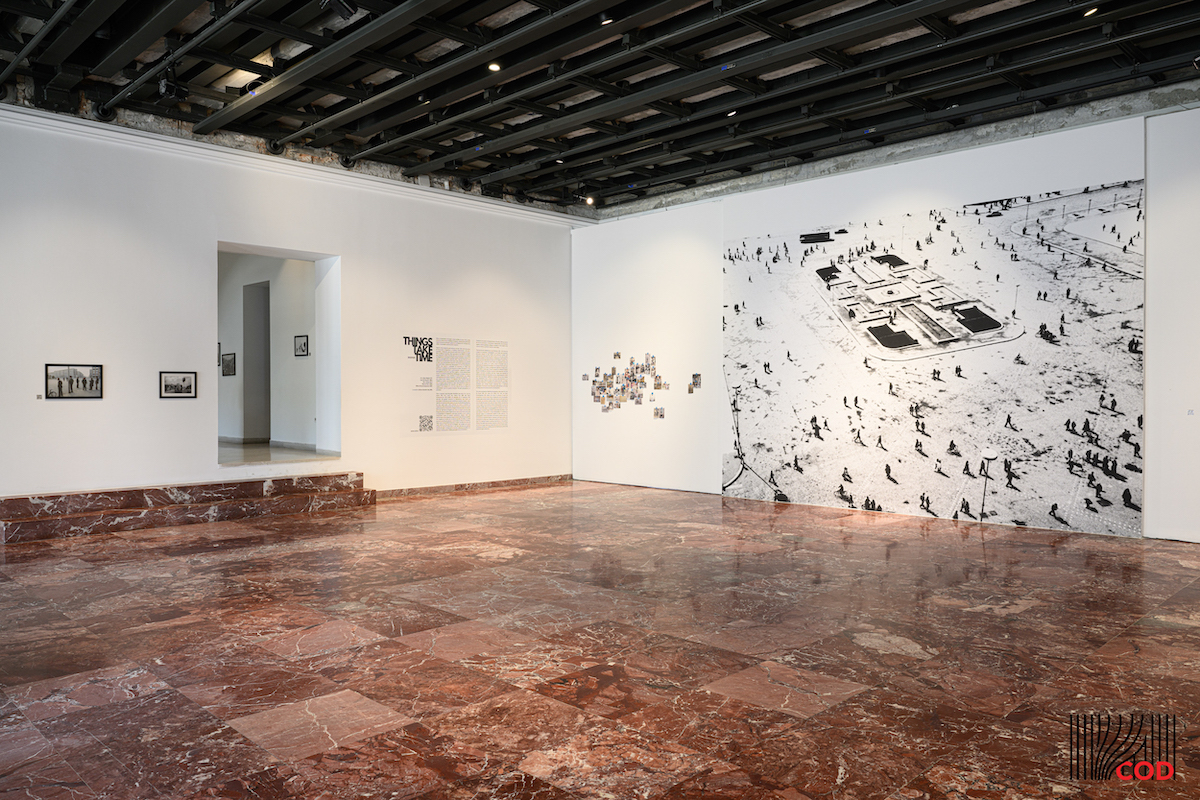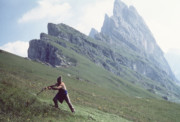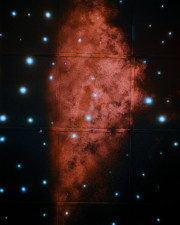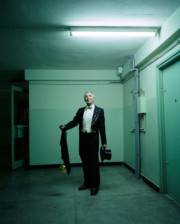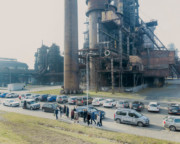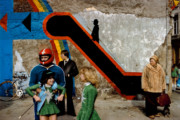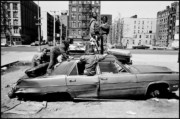Albania Through the Archive
Five photographers explore representations of Albania in the Magnum archive
A few years ago, while visiting the Magnum office in Paris, Enri Canaj began to uncover images from his native Albania in the Magnum archive. Looking at images from five photographers, including himself, Canaj began to trace the story of the country’s post-communist era, from the cusp of the regime’s demise in 1991, through the country’s gradual reopening of its borders through the 90s, and a period of economic growth around the turn of the millennium.
This summer, at the Center for Openness and Dialogue in Tirana, an exhibition of this work is now on view, featuring the work of five Magnum photographers spanning two decades: Canaj, Nikos Economopoulos, Alex Majoli, Carl de Keyzer, and Martin Parr. Curated by Sylvia Sachini, the exhibition is titled “Things Take Time,” a nod to the country’s gradual rebuilding over the years.
The first to travel to Albania were Greek photographer Economopoulos and British-born Martin Parr, and a young Alex Majoli from 1990 to 1992, in the moments before and directly after the fall of the communist regime. It was a period in which entering the country was still incredibly difficult for foreigners, as Albania had been sealed off for several decades. What lay behind its curtain remained shrouded in mystery for much of the world.
For Econompoulos, his interest in documenting Albania tied into this wider project exploring the lesser-explored aspects of the fall of communism; Albania, Bulgaria, Romania, the lives of the minorities in Greece, and the growing tensions in former Yugoslavia. His work was published as a photobook, In the Balkans, in 1995.
“One of the most interesting things I recall from that era is the bitter sarcasm and self-deprecating attitude towards the future that one encountered in Albania, which, at least in my eyes, registered as a healthier reaction [to the situation],” Economopoulos said in an interview with Magnum around his work. “It was as if they didn’t take themselves so seriously, standing almost in awe of what they had tolerated, and astounded by the amount of time they let it last. Like children in a dystopian wonderland. Still, they were putting themselves in the equation, taking on a role that entailed at least some – belated – sense of agency and responsibility.”
Carl de Keyzer traveled to the country several years later, in 1995. In a past Square Print Sale, he recounted his trip: “When I arrived in Albania for the first time in 1995, the country was not ready to host visitors. After years of brutal communism that completely closed it off from the outside world, only a few rooms were available to visitors in the entire country.
“After crossing a very surreal border post (with a very corrupt guard) in an old camper van, we reached Korce, where we stayed in the only hotel in town, a 12-story building with only four rooms available on the eighth floor. The elevator was not working.
“Later in the trip, when visiting Durres we stayed in a private room together with a retired general who could not stop talking about the glory days of Albanian communism when it withstood all pressure from the outside world. Looking out of my window I could see a monument to the WWII resistance movement with children playing on top of it [pictured below]. I could not resist going over there.
“In 2011, I revisited the Albanian coast. The whole area is now full of new hotels, terraces and bars.”
Alex Majoli traveled to Albania several times throughout the 1990s after graduating from art school in 1991. The exhibition features a selection of images that he shot in various parts of the country between 1991 and 1999, from small villages such as Theth in the northern regions to the coastal town of Sarandë in the far south.
Pictured above are a group of young boys playing on a victory monument built in honor of Sali Berisha’s presidential victory in 1992.
Martin Parr would return to Albania just over a decade after his initial visit, and in the accompanying caption to the photograph of a public phone, seen below, he wrote:
“This was taken a few weeks ago in Tirana, the capital of Albania. I hadn’t visited Tirana since 1989, and I have never seen a city change as dramatically as this one in just 11 years. It is virtually unrecognizable — new cafes along the streets, cars everywhere, Westernised shops, and a modernized phone system. Many Albanians still can’t afford this luxury, however, and so people in the street rent out what are effectively private phones. For small change, you can make a call at a cheaper rate than a phone booth. This phone was set up on a table in the middle of what looked like a rubbish tip, with most of the litter cleared away around it.”
For Canaj, who was born in Tirana but emigrated to Greece in 1991 at the age of eleven, returning to photograph his home country proved to be a challenge at first.
“What I left behind in Albania was a lot of sweet memories, so when I had a difficult time in Greece I would think of that. I decided to go back to Albania to find what I missed while I was far away. The people here are nice, and I felt like I was exploring myself. So photographing there became so much fun,” he describes. “To tell the truth, what I had kept of Albania was not specific moments, but more of a fantasy. So the pictures I took are a lot more abstract.”
“Things Take Time” is on view at the Center for Openness and Dialogue in Tirana, Albania until August 17. Plan your visit here.


